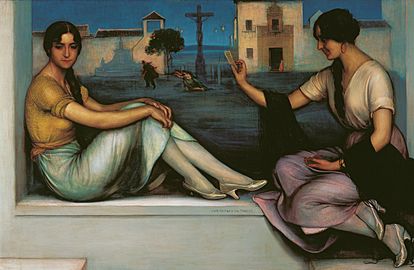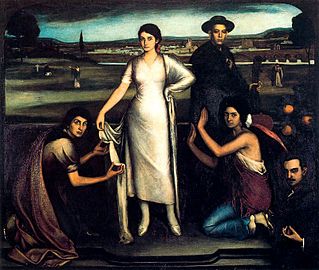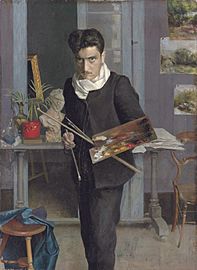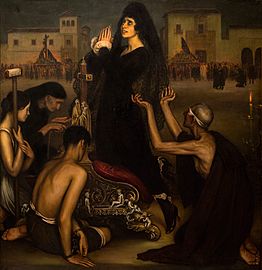Julio Romero de Torres facts for kids
Quick facts for kids
Julio Romero de Torres
|
|
|---|---|
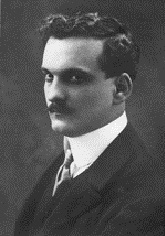
Photograph, c.1895-1905
|
|
| Born |
Julio Romero de Torres
9 November 1874 Córdoba, Spain
|
| Died | 10 May 1930 (aged 55) Córdoba, Spain
|
| Education | Rafael Romero Barros (father), Fine Arts Museum of Córdoba |
|
Notable work
|
|
| Movement | Symbolism |
Julio Romero de Torres (born November 9, 1874 – died May 10, 1930) was a famous Spanish painter. His two brothers, Rafael and Enrique, also became painters, just like him.
Contents
About Julio Romero de Torres
Early Life and Learning to Paint
Julio's father, Rafael Romero Barros, was also a painter. He was even the director of the Fine Arts Museum of Córdoba. Julio started learning to paint with his father at the School of Fine Arts when he was just ten years old.
His first paintings, like Head of an Arab and On Horseback, were made in 1889. Two years later, he started drawing pictures for a newspaper called Diario de Córdoba.
First Exhibitions and Teaching Career
In 1895, Julio showed his art for the first time at the National Exhibition of Fine Arts. He even received a special mention there. In 1897, he tried to win a scholarship to study art in Rome, but he didn't get it.
The next year, his brother Rafael passed away at only thirty-three years old. Julio also showed his work at the 1899 National Exhibition and won a third-class medal. Around this time, he began teaching at the art school. He also married Francisca Pellicer López, who came from a family of artists too. In 1903, he became a Professor at the school.
Travels and Recognition
During these years, Julio traveled a lot. He visited countries like Italy, France, England, and the Low Countries. In 1908, he won a first-class medal at an exhibition for his painting Gypsy Muse.
In 1912, his work didn't win any awards at an exhibition. However, his fans gave him his own gold medal, which was made by the sculptor Julio Antonio. After not winning at the 1915 exhibition, he stopped participating in them. Instead, he decided to live in Madrid. In 1916, he became a Professor at the Real Academia de Bellas Artes de San Fernando. He taught "Antique Drawing and Clothing."
Later Success and Final Years
Julio worked hard to show his art at many international exhibitions. His biggest success came in 1922 when he went to Buenos Aires with his brother Enrique. They opened a show at the Witcomb Gallery. A famous writer named Ramón del Valle-Inclán wrote the catalog for the show, and it was a huge success. Soon after, Julio was chosen as a full member of the Real Academia and the academy in Córdoba.
By 1928, Julio's health was getting worse. Doctors told him to rest for a long time. He was very tired from working so much and had liver disease. In 1930, he went back to his hometown to get better, but he kept painting. He left two paintings unfinished when he passed away at fifty-five years old. Many people in the city came out to mourn him.
Famous Paintings by Julio Romero de Torres
The Museum of Julio Romero de Torres is in his old home in Córdoba. It has many of his paintings. It also shows works by other famous artists like Francisco de Zurbarán, Alejo Fernández, Antonio del Castillo, and Valdés Leal.
Some of Julio's important paintings at the museum include Amor místico y amor profano, El Poema de Córdoba, Marta y María, La saeta, Cante hondo, La consagración de la copla, Carmen, and La chiquita piconera.
Images for kids
See also
 In Spanish: Julio Romero de Torres para niños
In Spanish: Julio Romero de Torres para niños


